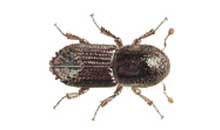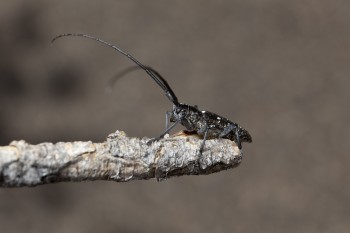
A look around the front-range reveals brown foliage on many pines and spruce. The brown tree foliage is on Austrian, Scotch, ponderosa, and pinyon pine as well as Colorado blue spruce. What is the cause of the problems pine and spruce trees are facing this year? For some of these trees, the causation dates back to 2012.
The summer of 2012 was dry and also the hottest in Colorado’s history. The uncharacteristic and prolonged summertime heat caused many evergreen trees to become drought stressed. The trees needed more water than the roots could provide. Last spring as trees were breaking winter dormancy, record low temperatures of 9 and 6 degrees were recorded on April 9 and 10 respectively. These temperatures froze pine and spruce foliage. The result was brown needles that fell in the early spring leaving sparse trees.
The most recent causation for the current pine and spruce browning can be traced to December 2013. The temperature pattern in December was dramatic. The first three days of December had temperatures 13 degrees above average. The high temperature on December 3 was 56 degrees, warming the foliage. Over the next 36 hours the temperature dove to a record minus 13. For the next six days the low temperatures were all below zero. After this arctic blast, temperatures rebounded to above normal. On December 18 a record high of 66 was recorded. In this weather pattern, the foliage was warmed and then suddenly frozen. The result is the brown needles you now see. This foliage will drop as the spring progresses.
Spruce and pine trees retain five years of needles. These defoliation events take evergreen trees multiple years to replace.
Other Causes for Brown Spruce and Pine
Ips Engraver Beetle

Spruce trees are dying from Ips engraver beetles. Ips continues to be a concern especially in older spruce trees. Spruce trees dying this spring were infested last fall. Soon beetles will begin flying from infested trees to new trees. Beetle infestations are always fatal.
Pine Wilt

This is a disease of Austrian, Scotch and mugho pines. The cause is the pinewood nematode which is spread by pine sawyer beetles. The pine sawyer overwinters in dead and dying trees. In the spring, the sawyer flies to a healthy tree feeding on succulent twigs. Nematodes, which are small worm like animals are introduced into the tree. Nematodes rapidly reproduce clogging water conducting tissues. The tree dies from drought stress. Trees dying this spring were infected in 2013.
Frequently pines and spruce are watered with drip irrigation. As the trees grow in size, existing drip systems may not provide enough water. Also, if the overhead sprinklers don’t reach the evergreen trees, they may need additional water. Give us a call to evaluate your tree’s needs. Our Recharge watering may provide just enough moisture when Mother Nature doesn’t.
Ips Beetles
Older spruce trees are especially vulnerable to this insect. While Ips does prey on water stressed trees, the tree stress is not always apparent by just looking at the tree. Beetle prevention requires two spray applications during the growing season.
Currently, pine wilt incidence is random along the front-range. Once discovered, the pine tree cannot be saved. The control for this disease is a trunk injection lasting for two years. Determine which Austrian and Scotch pines are important to you and contact us for a quote on nematode prevention.
Are you worried about your trees? The Denver tree service expets can help! Schedule a FREE consultation with an expert!